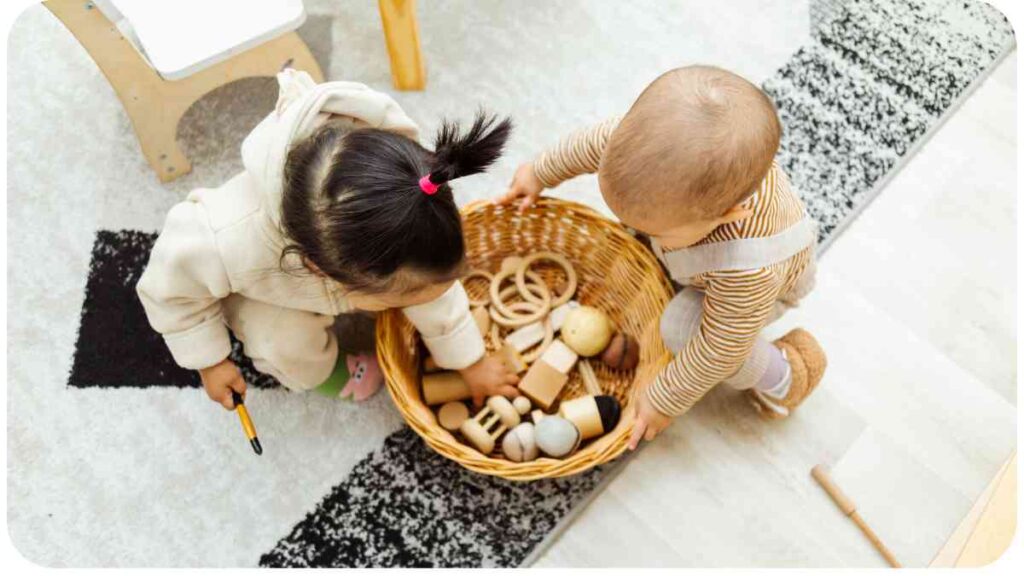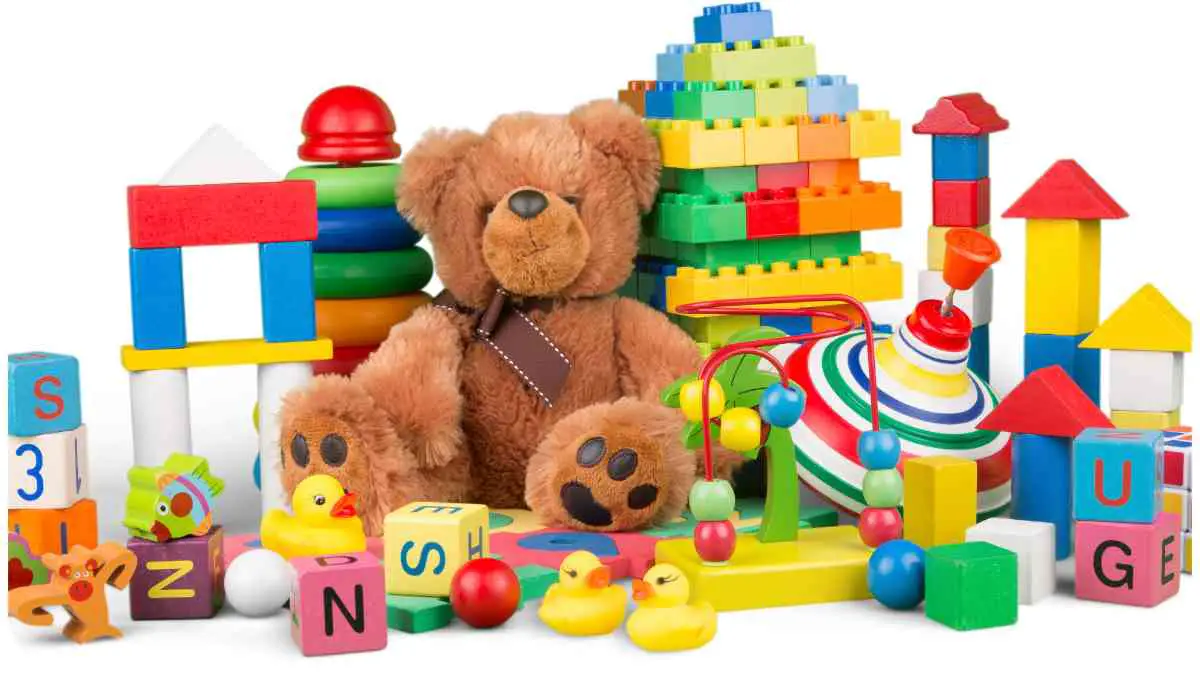Welcome to our comprehensive guide on understanding the different types of sensory toys. In this article, we will explore the importance of sensory toys and their benefits for children and individuals with sensory processing difficulties.
We will delve into various categories of sensory toys, providing examples and tables to make it easier for readers to understand. By the end of this guide, you will gain valuable insights, tips, and recommendations to choose the right sensory toy for your child or loved one.
| Takeaway |
| Sensory toys are specially designed to engage and stimulate various sensory systems. |
| They can provide numerous benefits including improved cognitive and motor skills, social interaction, sensory regulation, and stress reduction. |
| It is important to choose sensory toys that are suitable for the individual’s sensory preferences, developmental stage, and interests. |
| DIY sensory toys can be a cost-effective and customizable option. |
| Sensory toys are beneficial for individuals with special needs as they promote sensory integration and aid in achieving developmental goals. |
2. Why are Sensory Toys Important?
Sensory toys are essential tools that aid in the development and stimulation of our senses, including sight, sound, touch, taste, smell, and movement. They play a crucial role in helping individuals with sensory processing differences, including those with autism spectrum disorders, attention deficit hyperactivity disorder (ADHD), and sensory processing disorder (SPD).
Sensory toys allow these individuals to explore and interact with their environment, promoting sensory integration and regulation.
When selecting sensory toys for toddlers, consider safety and engagement. This comprehensive guide provides valuable insights into age-appropriate choices that enhance developmental benefits.
3. The Benefits of Sensory Toys

Sensory toys offer a wide range of benefits for individuals of all ages and abilities. They can help improve cognitive skills, enhance fine and gross motor skills, facilitate social interaction, promote emotional development, and encourage creativity and imagination.
Additionally, sensory toys provide a soothing and calming effect, reducing stress and anxiety in individuals who may feel overwhelmed by sensory stimuli.
4. Types of Sensory Toys
Understanding the different types of sensory toys is vital when selecting the right toy for a child or individual. Let’s explore each category in detail:
4.1 Visual Sensory Toys
Visual sensory toys stimulate the sense of sight and help individuals develop visual tracking skills, enhance visual perception, and improve eye-hand coordination. These toys engage the individual by providing visual stimulation through colors, patterns, lights, and movements.
Explore the world of blocks and their impact on sensory development. Learn how sensory blocks differ from regular ones and the benefits they bring to a child’s play and learning experience.
Table 1: Examples of Visual Sensory Toys
| Brand | Product Description |
| Visual Stimulation Toys | A set of colorful spinning tops with various patterns. |
| Light-Up Projector | A projector that displays captivating light patterns. |
| Transparent Blocks | Blocks with different colors and textures to explore. |
| Liquid Motion Timer | A mesmerizing timer with colorful liquid and droplets. |
4.2 Auditory Sensory Toys
Auditory sensory toys focus on sound perception and auditory development. They provide opportunities for individuals to explore and appreciate different sounds, tones, pitches, and rhythms.
Table 2: Examples of Auditory Sensory Toys
| Brand | Product Description |
| Musical Instruments | A set of percussion instruments for musical exploration. |
| Sound Puzzle | A puzzle that makes exciting sounds when pieces are placed. |
| Rainmaker Toy | A tube filled with small beads creating a calming rain-like sound. |
| Singing Plush Toys | Soft toys that sing songs or make sound effects when squeezed. |
4.3 Tactile Sensory Toys
Tactile sensory toys engage the sense of touch, allowing individuals to explore different textures, shapes, and temperatures. These toys promote fine motor skills, hand-eye coordination, and tactile discrimination.
Table 3: Examples of Tactile Sensory Toys
| Brand | Product Description |
| Fidget Toys | Small toys designed for sensory input and stress relief. |
| Texture Balls | Soft balls with different textures for tactile exploration. |
| Sensory Play Dough | Moldable dough with various textures and scents. |
| Tactile Sensory Blocks | Blocks with different textures and shapes for building and exploration. |
4.4 Proprioceptive Sensory Toys

Proprioceptive sensory toys aim to stimulate the sense of body awareness, coordination, and balance. These toys provide deep pressure and resistance, contributing to a sense of grounding and improved self-regulation.
Delve into the relationship between sensory toys and speech development. This insightful analysis examines how certain toys contribute to language skills, aiding parents and educators in fostering effective communication in children.
Table 4: Examples of Proprioceptive Sensory Toys
| Brand | Product Description |
| Weighted Blanket | A blanket with added weight for comforting sensory input. |
| Therapy Putty | Squeezable putty that offers resistance for hand strengthening. |
| Body Socks | Stretchy fabric sacks that provide proprioceptive feedback. |
| Resistance Bands | Bands that offer resistance for strengthening and stretching exercises. |
4.5 Vestibular Sensory Toys
Vestibular sensory toys focus on movement and balance, stimulating the inner ear’s vestibular system. These toys promote coordination, spatial awareness, and a sense of body control.
Table 5: Examples of Vestibular Sensory Toys
| Brand | Product Description |
| Swing Sets | Outdoor sets with swings for sensory motor integration. |
| Balance Boards | Boards that challenge balance and coordination. |
| Sit and Spin Toy | A spinning toy that engages vestibular senses. |
| Rocking Horse | A traditional toy that rocks back and forth. |
4.6 Olfactory Sensory Toys
Olfactory sensory toys stimulate the sense of smell, providing pleasant and engaging scents to explore. These toys can help individuals develop scent recognition and promote relaxation.
Discover sensory toys designed to enhance play for visually impaired kids. This guide on the best sensory toys ensures inclusivity, providing valuable options for parents and caregivers to support sensory exploration in children with visual challenges.
Table 6: Examples of Olfactory Sensory Toys
| Brand | Product Description |
| Scented Stickers | Stickers with various scents for sensory exploration. |
| Aromatherapy Playdough | Playdough infused with calming scents. |
| Scratch and Sniff Books | Books with scratchable scents on specific pages. |
| Scented Bubble Solution | Bubble solution with delightful scents for sensory play. |
4.7 Gustatory Sensory Toys
Gustatory sensory toys involve the sense of taste, allowing individuals to explore different flavors and textures. These toys can be helpful in expanding food preferences and promoting oral motor skills.
Table 7: Examples of Gustatory Sensory Toys
| Brand | Product Description |
| Chewable Jewelry | Necklaces or bracelets designed for sensory chewing. |
| Flavored Toothpicks | Toothpicks that come in various flavors for sensory input. |
| Taste Test Game | A board game that challenges taste recognition. |
| Squeezy Yogurt Tubes | Yogurt in squeezable tubes for sensory exploration. |
4.8 Multi-Sensory Toys
Multi-sensory toys involve the integration of different sensory modalities, providing a comprehensive sensory experience. These toys combine various sensory elements, offering a rich and engaging playtime.
Table 8: Examples of Multi-Sensory Toys
| Brand | Product Description |
| Sensory Balls | Balls with different textures, colors, and sounds for multisensory input. |
| Interactive Light Cube | A cube that emits changing lights, sounds, and vibrations. |
| Sensory Play Mat | A mat with different textures, colors, and activities for multi-sensory exploration. |
| Projection Dome | A dome that projects mesmerizing images with accompanying sounds. |
5. How to Choose the Right Sensory Toy
When choosing a sensory toy, it’s important to consider the individual’s specific sensory needs, preferences, and developmental stage. Here are some factors to keep in mind:
- Sensory Preferences: Consider which sensory modality the individual responds to the most.
- Skill Level: Choose toys that match the individual’s developmental stage and abilities.
- Safety: Always prioritize the safety of the individual using the toy.
- Personal Interests: Take into account the individual’s interests and hobbies for increased engagement.
Take sensory play beyond walls with creative outdoor activities. This guide offers ideas for sensory play that engage children’s senses amidst nature, fostering a holistic approach to learning and development while enjoying the great outdoors.
6. Tips for Engaging with Sensory Toys
To maximize the benefits of sensory toys, here are some tips for engaging with them:
- Observe and Explore: Allow the individual to explore the toy at their own pace.
- Observe and Explore: Allow the individual to explore the toy at their own pace.
- Follow the individual’s lead: Let them guide the play and follow their interests.
- Provide a variety of options: Offer a range of sensory toys to cater to different preferences and needs.
- Encourage creativity: In addition to using the toy as intended, encourage imaginative play and open-ended exploration.
- Join in the play: Show enthusiasm and participate in the play with the individual, fostering connection and enjoyment.
- Provide a safe environment: Ensure that the play area is free from hazards and distractions.
- Set aside dedicated sensory playtime: Designate specific times for focused sensory play to make it a regular part of their routine.
7. Sensory Play Ideas
Sensory play is not limited to using specific toys. Here are some sensory play ideas you can try:
- Sensory Bins: Fill a container with materials like rice, sand, or water for tactile exploration.
- Sensory Bottles: Create sensory bottles filled with colorful liquids, glitter, or small objects for visual and auditory stimulation.
- Playdough Play: Use playdough infused with different scents, textures, or colors for a multi-sensory experience.
- Nature Walks: Take walks outdoors to explore different sensory experiences like feeling the wind, touching trees, or smelling flowers.
- Messy Play: Engage in messy play activities like finger painting, shaving cream play, or playing with slime.
Remember to tailor the sensory play activities to the individual’s preferences and needs.
8. DIY Sensory Toys
Creating your own sensory toys can be a rewarding and cost-effective option. Here are a few simple DIY sensory toy ideas:
- Sensory Bottles: Fill clear bottles with water, food coloring, and glitter, then secure the lid tightly.
- Sensory Bags: Fill sealable plastic bags with hair gel, beads, or colorful pom poms for tactile exploration.
- Texture Boards: Create boards with different materials like sandpaper, fabric, or feathers for tactile stimulation.
- Sensory Treasure Hunt: Hide objects with different textures around the house or garden for a tactile scavenger hunt.
DIY sensory toys allow for customization and can be tailored to address specific sensory needs.
9. Sensory Toys for Different Age Groups
It’s important to consider age appropriateness when selecting sensory toys. Here are some guidelines for different age groups:
- Infants and Toddlers: Choose toys that are safe and encourage exploration through different senses, such as soft plush toys, textured teethers, and musical mobiles.
- Preschoolers: Opt for toys that promote creativity and fine motor skills, such as playdough, building blocks, and puzzles with tactile elements.
- School-Age Children: Look for toys that offer more complex sensory experiences, such as science kits, musical instruments, and interactive games.
- Adolescents and Adults: Consider sensory toys that provide calming effects, stress relief, and opportunities for self-expression, such as stress balls, fidget spinners, and art supplies.
10. Conclusion
Understanding the different types of sensory toys is crucial in providing individuals with meaningful and engaging sensory experiences. By incorporating various sensory modalities, these toys promote development, learning, and emotional well-being for individuals with sensory processing difficulties.
By following these guidelines, considering individual needs, and engaging in sensory play, you can create an enriching environment that supports sensory integration and regulation.
Remember to choose age-appropriate toys, engage in DIY options, and foster an environment that encourages exploration and play. Sensory toys have the power to enhance lives by providing individuals with the tools necessary to navigate and enjoy the world around them.
Further Reading
Here are some additional resources to learn more about sensory toys:
- Verywell Family: What Are Sensory Toys? – This article provides an overview of sensory toys, their benefits, and how they can be used to support children’s development.
- Friendship Circle: The Five Types of Toys for Children with Special Needs – Learn about the five types of toys specifically designed for children with special needs, including sensory toys, in this informative blog post.
- GetGoally: Neurodiversopedia – What Are Sensory Toys? – Dive deeper into the world of sensory toys with this comprehensive guide that explains different types of sensory toys and how they can benefit neurodiverse individuals.
FAQs
What are sensory toys?
Sensory toys are specially designed toys that engage one or more sensory systems, such as sight, sound, touch, smell, and movement, to provide sensory stimulation and promote sensory integration.
What are the benefits of sensory toys?
Sensory toys offer various benefits, including improving cognitive skills, enhancing motor skills, promoting social interaction, aiding in sensory regulation, and reducing stress and anxiety.
How do sensory toys help individuals with special needs?
Sensory toys can be particularly beneficial for individuals with special needs as they can assist in sensory integration, provide a calming effect, promote focus, and support developmental goals.
How do I choose the right sensory toy for my child?
When selecting a sensory toy, consider your child’s sensory preferences, developmental stage, and interests. Choose toys that match their specific needs and provide a stimulating and enjoyable sensory experience.
Can I make my own sensory toys?
Yes! DIY sensory toys are a cost-effective option. You can create sensory bottles, texture boards, or sensory bags using simple materials like water, glitter, fabric, or beads. DIY sensory toys allow for customization and creativity.

Meet Hellen James, the multi-talented writer and nurturing mother who takes young readers on a thrilling journey through her sensory-infused blog. Drawing inspiration from her own experiences as a parent.

